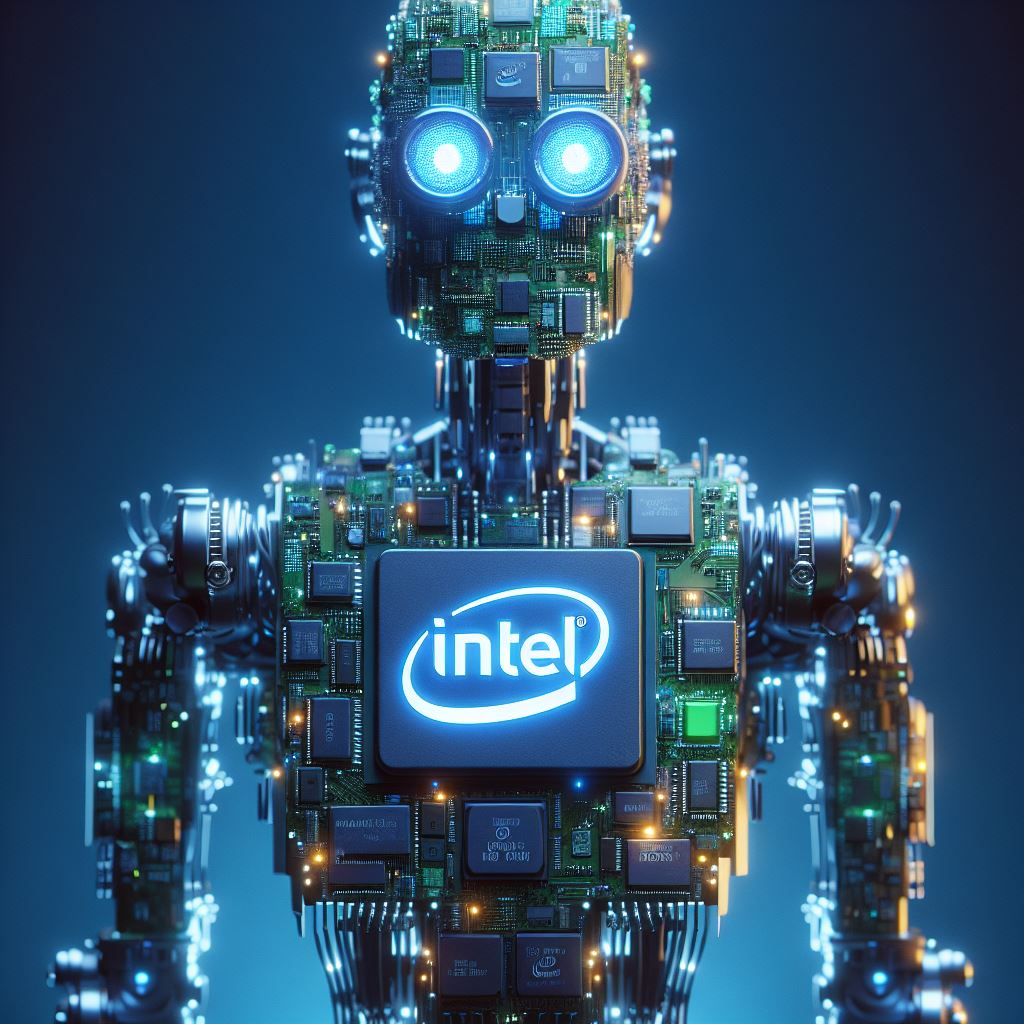Intel Gaudi 3 Challenges Nvidia H100 in AI Chip Market
The landscape of artificial intelligence (AI) hardware is ever-evolving, with companies constantly striving to push the boundaries of performance and efficiency. One recent development in this arena comes from Intel, which unveiled its latest AI accelerator chip, the Gaudi 3, at the Vision 2024 event in Phoenix. This new chip is positioned as a formidable alternative to Nvidia’s H100, a widely-used data centre GPU that has faced supply shortages in recent times.

Intel’s Gaudi 3 chip boasts impressive performance metrics, particularly in tasks involving large language models (LLMs), such as the ones powering ChatGPT. According to Intel, the Gaudi 3 promises a 50 percent faster training time compared to Nvidia’s H100 for models like OpenAI’s GPT-3 175B and Meta’s Llama 2. Similarly, for inference tasks, Intel claims a 50 percent improvement in performance over the H100 for models like Llama 2 and Falcon 180B.
The timing of Intel’s Gaudi 3 release couldn’t be better, considering the ongoing supply issues plaguing Nvidia’s H100. These shortages have been a headache for tech companies and AI researchers, prompting some to explore custom AI accelerator chip designs. With its competitive performance and potential price advantage, the Gaudi 3 could emerge as an attractive option for those seeking an alternative to the H100.
But Intel isn’t the only player in the AI hardware arena. AMD also offers a range of competitive AI chips, such as the Instinct MI300 Series, further intensifying the competition in this space. The emergence of these alternatives underscores the growing demand for efficient AI hardware solutions as businesses across various sectors look to leverage AI for innovation and growth.
Delving deeper into the specifications of the Gaudi 3, we find that it builds upon the architecture of its predecessor, Gaudi 2, with significant enhancements. Featuring two identical silicon dies connected by a high-bandwidth connection, each die houses a central cache memory, matrix multiplication engines, and programmable tensor processor cores. This design allows for efficient large-scale AI computation, essential for tasks like deep learning computation.
One of the key highlights of the Gaudi 3 is its power efficiency, a crucial factor in data centre environments known for their high energy consumption. Intel claims a 40 percent greater inference power efficiency compared to Nvidia’s H100 across various parameter models. This advantage is attributed to Gaudi’s large-matrix maths engines, which require less memory bandwidth than other architectures.
Comparisons between Intel’s Gaudi 3 and Nvidia’s upcoming Blackwell architecture, including the B200 GPU, are inevitable. While specific performance metrics are yet to be benchmarked by third parties, it’s clear that both companies are pushing the boundaries of AI hardware capabilities. Intel’s choice to manufacture the Gaudi 3 using TSMC’s N5 process technology narrows the gap between the two giants in semiconductor fabrication.
Looking ahead, the release of Intel’s Gaudi 3 marks a significant milestone in the ongoing race to power the tech industry’s AI computation needs. With its promising performance metrics and potential price competitiveness, the Gaudi 3 is poised to make waves in the AI hardware market. As businesses continue to embrace AI for various applications, the demand for efficient and scalable hardware solutions will only continue to grow.
Expanding upon the significance of Intel’s Gaudi 3 release, it’s essential to recognize the broader implications for the AI industry as a whole. As AI continues to permeate various sectors, from healthcare to finance to manufacturing, the demand for robust hardware solutions capable of handling complex AI workloads is skyrocketing. Intel’s Gaudi 3 addresses this demand by offering a potent combination of performance, efficiency, and scalability.
Moreover, the introduction of the Gaudi 3 signifies Intel’s commitment to fostering an open ecosystem for AI development. By integrating the PyTorch framework and providing optimised models through the Hugging Face community, Intel empowers developers to harness the full potential of their hardware. This open approach not only enhances developer productivity but also fosters innovation and collaboration within the AI community.
Looking beyond the immediate horizon, the release of the Gaudi 3 sets the stage for Intel’s future endeavours in the AI hardware space. With plans for the Falcon Shores GPU, which will integrate Gaudi and Intel Xe IP, Intel aims to further push the boundaries of AI and high-performance computing. This unified approach, built on the Intel oneAPI specification, promises to streamline development and accelerate time-to-market for AI-driven solutions.
As Intel continues to innovate and push the envelope in AI hardware, the broader AI ecosystem stands to benefit. From startups to large enterprises, organisations will have access to powerful, efficient, and scalable hardware solutions that enable them to unlock new possibilities with AI. Ultimately, Intel’s Gaudi 3 represents more than just a chip; it’s a catalyst for driving AI-driven innovation and shaping the future of technology.
In conclusion, Intel’s introduction of the Gaudi 3 AI accelerator chip represents a significant advancement in the field of AI hardware. With its impressive performance metrics and power efficiency, the Gaudi 3 emerges as a formidable competitor to Nvidia’s H100 and other AI chips in the market. As the demand for AI continues to rise across industries, the availability of innovative hardware solutions like the Gaudi 3 will play a crucial role in driving AI-driven innovation and growth.
for all my daily news and tips on AI, Emerging technologies at the intersection of humans, just sign up for my FREE newsletter at www.robotpigeon.be






